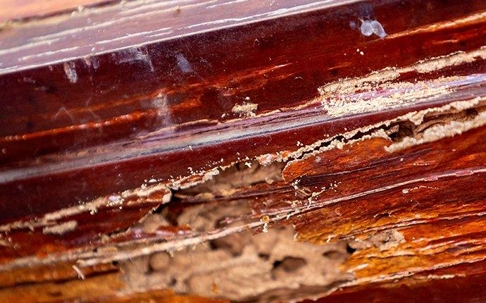The tiniest creatures that haunt most homeowners’ nightmares, termites are no joke. They cause billions of dollars worth of destruction (five billion a year in the United States, to be exact) and can cause total loss of homes and commercial buildings if left untreated. That means you need to be particularly vigilant against termite infestations in your Bay Area home — especially since termites are one of the hardest pests to even know you have. Here’s how you can defend your property against them.
Signs Of Termites
In the wild, termites are actually great for the environment. Not only do they provide food for dozens of different species further up the food chain — making them one of the food chain’s foundational species in many ecosystems — but they also help aid the process of decay. Termites eat cellulose, and when they process that cellulose and excrete waste, they help break down dead plants and put the nutrients they contain back into the soil. Termites are vital to the circle of life in forests worldwide, and without them, many couldn’t survive.
Most termites stay in the wilderness where they belong. In fact, only a small percentage of the termites on Earth ever come into contact with people. However, when they do, they cause immediate issues. Termites are real homebodies. Since they typically live directly under or right inside their food sources, they rarely leave their colonies for anything other than to reproduce. That means you might not notice signs of termites until you’ve had them for quite a while.
One big sign of termites is the swarm. When a mature termite colony is ready to propagate itself, it sends out thousands of reproductive, flying adults called alates. These males and females have only one job: pair off and found satellite nests. If you see a swarm or signs of a swarm, like piles of shed wings, that is a major sign you have an established and potentially serious termite infestation. Other signs include:
- Peeling paint or other damage that looks like water damage (sans the water).
- Bulging, discolored drywall or drywall with lots of pinholes in it.
- Hollow-sounding wooden walls.
- Buckled floorboards, sagging ceilings, and warped walls.
- Windows and doors that don’t fit in their frames.
What To Do About Termites
Termites are one of those pests that you need to do something about immediately if you notice signs of their presence. Every minute you leave termites unchecked in your home is a minute they’re actively damaging it. Many people try to handle termites on their own when they run across signs of infestation. Some common OTC methods for killing termites include:
- Termiticide chemicals: Foams and sprays that homeowners use to fill cracks and crevices termites inhabit.
- Termite baits: Poison baits placed near termite nests can trick termites into eating toxins that kill them.
- Nematodes: These parasites invade termite bodies and disrupt their natural processes, taking only days to kill individual bugs.
- Diatomaceous earth: This sharp sandy material made of tiny, fossilized organisms shreds the exoskeleton off termites and kills them.
The problem with all these methods is that while they’re effective at reducing the termite population in your home, it’s unlikely they’ll eliminate it. When you use one of these methods on colonies you find, you’re more often than not just making room for the satellite nests you didn’t find to move in and fill the void. That’s why you’ll need professional help to get the entire infestation.
Here at Bay Pest Solutions, we’ve been protecting the Bay Area from termites for more than 40 years. We have the tools and techniques to find and eliminate termites, not just the parent colony but all its satellite nests. So give us a call or visit our contact page to schedule your service today.

